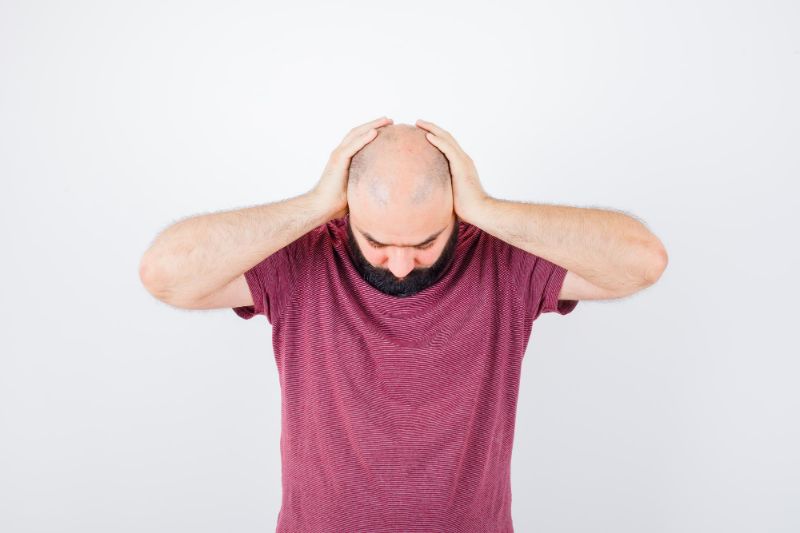Baldness is a common problem that both men and women face. In fact, over 50% of men will experience some degree of hair loss by the time they reach the age of 50. While baldness can be embarrassing for some, it is important to remember that there are many treatment options available. In this blog post, we will discuss the causes and symptoms of male pattern baldness and the various treatment options.
Causes and symptoms of male pattern baldness
Male pattern baldness (MPB) is the most common form of hair loss in men, affecting more than half of all men by the time they turn 50. MPB is characterized by a receding hairline and thinning hair on the crown of the head. In severe cases, men may even lose all of the hair on their heads.
The exact cause of MPB is unknown, but it is thought to be related to a combination of genetic and hormonal factors. Androgenetic alopecia, the medical term for MPB, occurs when the hair follicles are sensitive to dihydrotestosterone (DHT). DHT is a hormone that is produced by the testicles and adrenal glands. It is also present in small amounts in women.
When DHT binds to the receptors in the hair follicles, it causes them to shrink. This leads to a shorter growth cycle for the hair, and the follicles eventually stop producing new hair. The exact mechanism by which DHT causes MPB is not fully understood, but it is thought to be due to its effect on the miniaturization of the hair follicles.
MPB usually begins with a receding hairline at the temples. The hairline then progresses to form an "M" shape. As the condition worsens, hair loss spreads from the top of the head to the sides and back. In severe cases, men may even lose all of their hair.
Symptoms of MPB can vary from person to person. For example, some men may only have a slightly receding hairline, while others may experience more extensive hair loss. In general, MPB progresses slowly and can take years to reach its full extent. There are no medical risks associated with MPB, but some men may feel self-conscious or anxious about their appearance.
Male pattern baldness treatments
Male pattern baldness (MPB) is the most common form of hair loss in men, affecting millions around the world. The good news is that the treatments available can help slow down or even stop the progression of MPB.
The most common treatment for male pattern baldness is minoxidil. Minoxidil is a topical solution that is applied to the scalp twice daily. It works by encouraging hair growth and slowing down hair loss. It is available over the counter in both 2% and 5% concentrations. Common side effects of minoxidil include itching, redness, and scalp irritation.
Another treatment option for male pattern baldness is finasteride. Finasteride is a pill that is taken once daily. It works by inhibiting the production of testosterone, which can help to reduce hair loss and promote hair growth. Common side effects of finasteride include decreased libido, erectile dysfunction, and reduced semen production.
Surgery may also be an option for treating male pattern baldness. Hair transplant surgery involves taking hair from other body areas and grafting it onto the scalp. This can help to give the appearance of a fuller head of hair. However, side effects of surgery can include scarring, infection, and bleeding.
In some cases, lifestyle changes such as managing stress levels or switching to a healthier diet can also help slow down or even reverse hair loss.
Conclusion
It's important to be proud of your appearance, no matter what society tells you. You are beautiful and unique and deserve to love yourself just the way you are. If you want to explore your treatment options for male pattern baldness or identify any underlying causes, a quick consultation with a Cura4U online doctor may be the right place to start!












